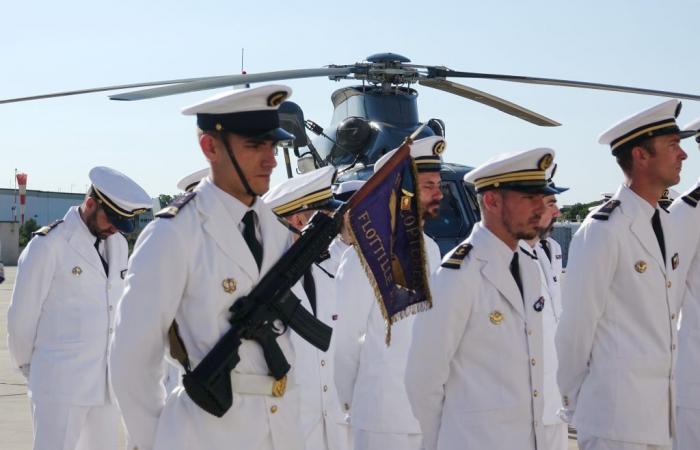Less than a year after its reactivation on the Lanvéoc-Poulmic BAN, on June 29, 2023, the 32F flotilla is completing its deployment with its third and final deployment, in Hyères, on the Mediterranean coast. On Thursday, June 27, a ceremony officially marked the transfer of SPI alert from the 35F to the 32F. “The rescue, protection and intervention (SPI) alert is a system of the French Navy that ensures maritime security in the area via naval aviation resources kept on alert 24 hours a day. Also called SAR (search and rescue) alert, this mission has been that of the 35F flotilla on the Mediterranean coast for 26 years,” explains the French Navy.
The 32F is equipped with six new H160 helicopters, leased from a consortium comprising Airbus Helicopters, Babcock and Safran. The 10-year contract was awarded at the end of 2019 as part of the creation of an interim fleet of helicopters, pending the arrival of the future Guépard Marine, deliveries of which will not begin before 2029. After leaving the Airbus Helicopters final assembly line in Marignane and then being adapted to the needs of the French Navy at the Babcock site in Le Cannet-des-Maures, the H160s were delivered between November 2022 and February 2024. The first operational detachment for sea rescue missions was in Cherbourg-Maupertus, where an H160 took over on 21 July 2023 from the Caïman Marine (NH90) of the 33F, which was stationed at the tip of the Cotentin. The switch between the two types of machines for SAR missions then took place on 14 December in Lanvéoc-Poulmic.
Of the six H160s now available to naval aviation, one is stationed at Cherbourg-Maupertus, two at Hyères and the others at Lanvéoc-Poulmic, where the 32F is based.
In total, 13 modifications were made compared to the civilian version of the H160, including the integration of military communications, a Euroflir 410S optronic ball from Safran, armor plates, a console for an operator in the cabin and a medical wall for medical evacuations. The devices are also capable of carrying out night flights with the use of night vision binoculars.
© An article from the editorial staff of Mer et Marine. Reproduction prohibited without the consent of the author(s).






